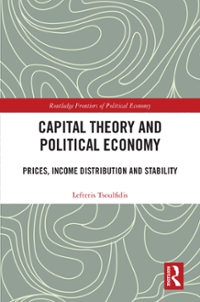Question
Economic thinking focuses on opportunity costs and marginal decision-making. Briefly explain these concepts 2. Water is cheap, and we consume a lot of it. Jewellery
Economic thinking focuses on opportunity costs and marginal decision-making. Briefly explain these concepts
2. Water is cheap, and we consume a lot of it. Jewellery is expensive, and we typically do not have much of it. Water is necessary for life; jewellery is not. Based on a marginal utility versus marginal cost (i.e., price) approach, explain why something so important to life, like water, is cheap relative to jewellery.
3. Due to its addictive properties, the demand for tobacco is price inelastic. Additionally, due to regulation, the supply of tobacco is also price inelastic. Graph this market. If an excise tax is added to the sale price of tobacco, show how this would impact the market.
4. Rent control and minimum wage are two examples of market interventions, which have socially good intentions. While the benefits are clear (cheaper rent and higher wages), explain the potential short-comings of these policies and why these markets need to be monitored.

Step by Step Solution
There are 3 Steps involved in it
Step: 1

Get Instant Access to Expert-Tailored Solutions
See step-by-step solutions with expert insights and AI powered tools for academic success
Step: 2

Step: 3

Ace Your Homework with AI
Get the answers you need in no time with our AI-driven, step-by-step assistance
Get Started


